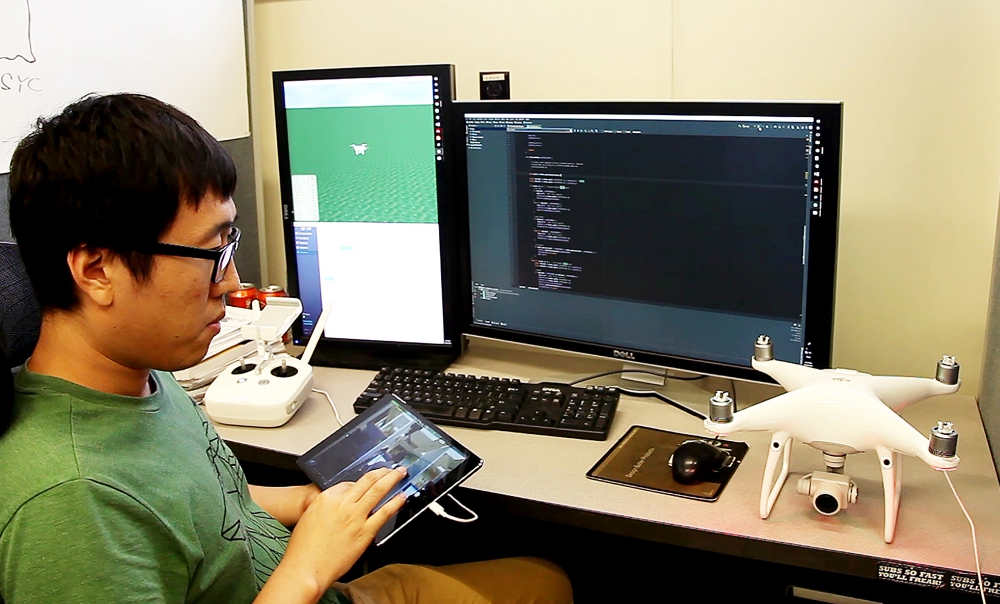Drone operators struggling to fly the multi-propeller device and take pictures simultaneously could soon have a much simpler method to steering flight. Bedrich Benes, a professor of computer graphics technology, and doctoral student Hao Kang at Purdue University collaborated with corporate researchers to develop a touch-screen method to navigate and take pictures with drones.
The method, called FlyCam, works with the concept of combining the drone and the camera movements.
“So the user doesn’t have to think about multiple controls for the drone and the camera,” Benes said. “He or she can think about the drone as a simple three-dimensional flying camera that is being controlled by simple gestures on a touch-screen device.”
The research was published in the October issue of IEEE Robotics and Automation Letters.

Hao Kang, doctoral student and co-investigator for FlyCam, works on the touch-screen navigation system
FlyCam uses one- and two-finger drags across a smartphone or tablet to control the drone as it accelerates or turns and takes images. The drone moves forward or backward along the camera’s axis with single or double taps to the screen.
Traditional, more complicated drone controls utilize dual joysticks for the drone navigation as well as an addditional joystick and gimbal – a pivoted support that allows rotation on a single axis – to control the camera.
“We did a user study and most of the users performed with the FlyCam better,” Kang said. “It is easier to use just a single simple mobile device compared to combination of cumbersome remote controls.”
As part of the research, Benes said they looked at the ability of licensed drone pilots with a remote control and compared that to people who have picked up a drone for the first time using FlyCam.
“And the people who have picked up a drone for the first time were equal or better than those who are licensed to fly,” Benes said. “That is what actually impressed us the most.”
FlyCam was testing using an Android system. Fliers worked better when using a tablet, which allowed for larger movements and better control.
Benes said he and Kang will continue working with on the research, which will include automated photos from the camera.
Photo: Purdue University photo/High Performance Computer Graphics Lab
Source: Press Release
